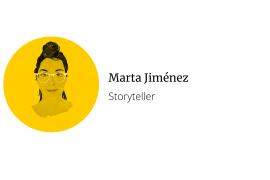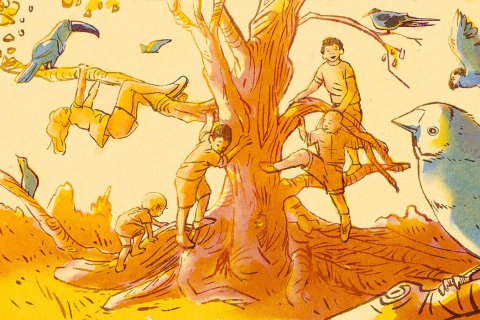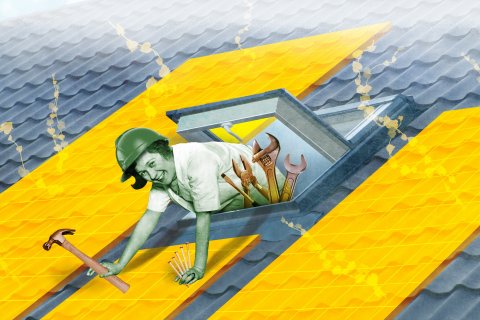Fairtrade, Rainforest Alliance, Organic, Bird Friendly… Certification labels for products like chocolate or coffee offer a guarantee of sustainability, but how sustainable are they really? Is paying a fair price for farmers enough to make coffee or cacao fair or sustainable? And what else, apart from labels and premiums, can sustain the ecosystems and the communities who grow these crops so that we will still be able to buy these luxuries in the future? Utrecht University researchers study or support innovations that can make global supply chains more sustainable. So that you can make a more informed choice the next time you find yourself standing in front of a supermarket shelf packed with labels.
Decades of sustainability labels. What now?
Estimated reading time: 12 minutes

It all started with Fairtrade. In 1988, Dutch supermarkets sold the first packs of coffee carrying the Fairtrade label, Max Havelaar. Since then, hundreds of certification labels have emerged, indicating that the product in question is in some way 'sustainable'. But what does that mean? And what have these certifications done for the sustainability of supply chains, more than 30 years later?
More than half of the coffee sold in The Netherlands is produced sustainably.
“It’s very difficult to determine the real ecological and social impact of the more than 400 sustainability standards that exist for agricultural products, as they vary immensely per country or sector”, admits environmental scientist Walter Vermeulen. “But we have come up with a good proxy - their potential impact on the environment and the community of producing countries.”
According to Vermeulen’s calculations, the increase of certified coffee on the shelves, for example, is a positive force for sustainability. For one, “it pushes ‘mainstream’ companies and big market leaders to also become more sustainable.” Vermeulen used two certification coffee systems which are dominant in the Netherlands: Fairtrade Coffee (‘Max Havelaar’) and Utz Certified (now Rainforest Alliance since their merger in 2018).
For years, the market share of certified coffee remained at a low of 2 to 3%. But today, more than half of the coffee sold in The Netherlands is produced in a sustainable manner. “Between 2003 and 2009, the combined impact potentials of Fairtrade and Utz grew from 16.9 to 41.7, which is a 147% improvement”, says Vermeulen. “That’s a big achievement; it gives you a good idea of the influence of certifications in driving the whole coffee industry towards sustainability.”
Not all coffee from certified sources ends up as certified coffee on the shelves.
But do these sustainability certifications improve the lives of farmers? The evidence here is mixed, says Vermeulen. “Some certification organisations pay a premium to farmers or the cooperatives to make up for insanely low wages, but there’s also a downside effect: encouraging coffee production with a price premium could also lead to too much coffee being produced, driving down farm gate prices as a result. What’s more, not all coffee from certified sources ends up as certified coffee on the shelves. You often see that coffee certified as Fair Trade, for example, gets sold at a regular price [to traders], meaning consumer demand for certified products is still lagging behind”, explains Vermeulen.
If there isn’t enough consumer demand for certified coffee or chocolate, the price premium for producers may decrease over time. Even if farmers still have to bear the brunt of certification. “It’s a paternalistic system”, argues Vermeulen. “Certification rules are written by high-income countries, but it falls on farmers on low-income countries to pay for the additional costs of certification: in time, resources and money.”
Best under the shade
So what interventions can actually benefit farmers, while still protecting the environment? “Changing the way we grow these crops”, says René Verburg, who specialises in agroforestry, a system that combines the cultivation of trees with agricultural crops. “It’s not a new method. It’s how these century-old crops have been grown traditionally – under the shade of other trees and their canopies.”
Introducing or preserving shade trees in coffee systems have multiple benefits, says Verburg, whose research looks into how the transition to sustainable farming practices can restore the ecological balance. “Trees block direct sunlight, provide cooling, and protect the beans against heavy rainfall, which increase the resilience of coffee to climate changes. They also provide oxygen and remove carbon from the atmosphere, making them important to combat climate change”, Verburg explains. “Shade-grown coffee systems provide habitat for hummingbirds, butterflies or insects, which, in turn, act as natural pesticides. And if there are enough nitrogen fixing trees species like Acacia and Inga species, farmers can do away without fertilisers entirely.”
Shade-grown coffee improves the quality of the bean, so farmers can sell it at a higher price.
For all the known environmental benefits of shade-grown coffee, it was still unclear whether this form of agriculture was also economically viable for farmers. Verburg: “In recent decades, many cacao and coffee farmers had switched to growing their beans under the scorching sun for mass production, thinking it will yield more - even if large monocultures are also more susceptible to fungi, pests and diseases due to the lack of genetic diversity.”
One of his close colleagues, Associate Professor of Land Use, Biodiversity and Ecosystem Services, Pita Verweij, and a team of PhD students from Utrecht University wanted to verify that for once. After surveying some 162 farms in Peru and 74 farms in Colombia, they found that increasing shade trees, at an optimum, would also improve farmer livelihoods. Verweij: “As shade improves the quality of the bean, farmers can sell it at a higher price. They also receive additional income from products derived from the shade trees like fruit, nuts and wood, so they are less dependent on just one crop, whose price fluctuates so much in the world market.” So even if the harvest is lower, the farmers’ total income can still be higher.
A landscape approach
“Existing certification schemes can nudge farmers to take up shade systems”, says Verburg. For example, the Rainforest Alliance certification checklist requires a coffee farm to have at least 12 trees per hectare and at least 40 percent of the plantation covered in shade. But that may not suffice to adapt the plantation to climate change, says Verburg. “We need more integral solutions that go beyond the farm, since coffee systems are part of a landscape. For example, by combining an area of natural vegetation with coffee production in an agroforestry system, so that species can move from one area to the other. Or requesting stricter certification criteria in an area which is more vulnerable to biodiversity loss, and allowing for more intensive production in another.”
Such an integrated approach requires spatial policies, stresses Verburg. “Certification companies don’t have any jurisdiction over such an extensive system. The task of where to put what is a job for local governments. But with our knowledge and research, we can provide recommendations for a more resilient and sustainable ecosystem that meet farmers’ economic needs too.”
Yet, climate-friendly agriculture still requires investments. For many farmers, earning a living income is hard enough, so what is climate-smart coffee worth if the farmers producing it are still starving?

More for the farmer
Do you know how much of your EUR 2.50 espresso or your EUR 4 cappuccino goes to the farmer? Just about one percent. Even if we spend 20 percent more on coffee than a decade ago, prices paid to farmers have plunged and now fluctuates around 1 euro per kilogram of beans, which barely covers the costs of production.
Eight companies dominate about two thirds of the global cocoa trade.
It’s the same with chocolate, says Milande Busquet, who lived side by side with cocoa producers from Western Africa during part of her PhD at Utrecht University. “Cocoa growers’ share has declined over the years. Only about 6 percent of the total value of a chocolate bar goes to the farmer today, compared to 16 percent in 1980”, explains Busquet, citing a landmark report on the state of sustainability in the cocoa industry. The culprit? The structure of the chocolate market plays an important role in keeping prices so low for farmers, says Busquet, who uses the image of an hourglass to describe the cacao value chain. “There are millions of farmers who are selling their cacao beans, on one end, and millions of consumers, people like you and me, on the other. But in the middle, there’s only a handful of traders and chocolate companies that control the market. About two thirds of the global cocoa trade and processing is dominated by just eight companies.”
That shows how the farmer has a very small bargaining power in the value chain, with little opportunities to improve working conditions. This in turn creates a host of other problems. “Reports say that there are 1.5 million children involved in the cocoa industry. While these numbers are shocking, these children often have no other job opportunities when they grow up but to go back to the farm”, says Busquet, who’s investigating the role of social entrepreneurship in addressing child labour. “To tackle labour issues in the chocolate sector and improve farmers livelihoods, farmers need to have a bigger cut of the value created, in addition to improved access to education and alternative labour markets”, says Busquet.
In other words, if there is to be true sustainability in supply chains – the kind that makes sustainable production economically viable for producers, then we have to confront those inequalities and power imbalances along these chains head on. How do we do that?
These innovations are helping create more domestic markets for chocolate, instead of relying on the imports of Toblerones and Ferrero Rochers.
Growing local appetite
It starts with creating better opportunities for those at the end of the chain. Or as Busquet’s colleague at the Utrecht University School of Economics Margot Leger likes to call it: “thickening the value chain”. For Leger, who grew up in South Africa eating British-branded chocolate, distributing the profits in the cocoa chain nearer to its production sites is also a no-brainer for sustainability. “The chocolate I ate in Johannesburg as a child was produced from cocoa beans grown in West Africa, exported to Europe to be processed and branded, only to travel back to South Africa. It feels crazy”, she sighs. “Investing in the chocolate production process for domestic consumption in the countries where cacao is harvested can create quality jobs locally and help businesses and communities thrive.”
Easier said than done, because the price points of these commodities remain largely inaccessible to those who grow them. Even in Ghana, the world's second-largest cocoa producer, people aren’t snacking on chocolate bars as we do in Europe or the US, notes Leger. Still, Leger’s research is illuminating the conditions that are necessary to build entrepreneurial capacity in cocoa producing countries. “My work consists of helping grow a consumer culture around chocolate and showing the different ways people can earn an income from it. And hopefully, one day we in The Netherlands will all be able to buy delicious chocolate branded and produced in Ghana.”
Local businesses are gradually starting to emerge, says Leger proudly. “Small entrepreneurs roast and peel the cocoa beans locally. The resulting cocoa nibs can either be sold at a higher value than the raw cocoa beans or made into products, such as cocoa butter or chocolate bars, that are also more profitable”, Leger explains. “These innovations are helping create more domestic markets for chocolate, instead of relying on the imports of Toblerones and Ferrero Rochers.”

Changing the system from within
To support entrepreneurial initiatives like those in Ghana, Utrecht University’s Social Entrepreneurship Initiative (SEI) teams up with organisations to analyse opportunities for improving their production processes and the resulting social impact. Researchers work with partners like Dutch chocolate company Tony’s Chocolonely to identify what’s needed to make a real impact on the livelihoods in cacao producing countries.
“One important role of social entrepreneurs is influencing other companies to act more sustainably”, says Professor of Social Entrepreneurship Niels Bosma, cofounder and coordinator of SEI. “By making their chocolate bars traceable to the cooperatives they work with, Tony’s has contributed to raising the bar for transparency and accountability in the sector. And by sharing their methods and inviting those of others through an Open Chain platform, they can influence the bigger players to improve transparency and traceability through their supply chains, and evaluate the effects of any improvement or initiative all the way down to the farmer.”
Because in the end, solving the many challenges these value chains face require the entire industry to join in the effort. Bosma: “By creating knowledge together, we can achieve more impact.”
The real price
Sustainability in global value chains is everyone’s business: farmers, big companies, entrepreneurs, local governments,... But what about us, consumers? How can we support sustainability efforts with our purchases? Is paying more for a chocolate bar or a cup of cappuccino the solution? “You’re asking the wrong question”, rebuts Utrecht food scientist Pim Croes. “We should not pay more for sustainable coffee or chocolate. To the contrary, the most sustainable option should be the cheapest for the consumer”, he asserts. If only we paid the real price, that is.
“The prices we pay today for most products rarely reflect their true cost. Think of the costs for the use of water, pesticides, CO2 emissions, deforestation, or child labour. Those extra costs are usually ‘hidden’ and unaccounted for in the finished product’s price tag”, explains Croes. “But make no mistake. As citizens, we are paying that price daily in the form of social and environmental damages.”
The economy of real prices rewards the prevention of ecological or social damage along the entire supply chain.
So Croes, together with environmental scientist Walter Vermeulen, came up with an idea that can revolutionise global supply chains: a methodology to calculate the ‘real price’ of daily products such as coffee and chocolate. “It’s a new lifecycle assessment method that calculates the price of the fully sustainable version of a product. This incorporates the social and environmental costs throughout the value chain into the market price.”
The method works to reward the prevention of ecological or social damage along the entire supply chain. “Imagine farmers lack the money to invest in planting native trees to make their beans fully sustainable. Those beans would carry Eco Social Cost Units (ESCUs), which the next link in the chain would have to account for”, explains Croes. “And so, every social or ecological externality is carried down the supply chain to the consumer, resulting in the real price of a coffee pack.”
If everyone in the supply chain, from farmers to roasters to supermarkets, would use this new lifecycle assessment method to allocate the actual price for the next link in the chain, enough money reaches those that need it to invest in preventing or reducing their environmental impact and improving social livelihoods. And it can help you, as a consumer, choose ethically sound products by seeing their real price.” Radical transparency.
If this real-price economy - the Oiconomy - is taken up and recognised, Croes forecasts, it wouldn’t make sense anymore for us not to buy the sustainable product.
While sustainability certifications are a good incentive to drive sustainable practices in the supply chains of cacao and coffee, further innovations are needed to address the existing market inequalities which are themselves a problem. Utrecht researchers study how to utilise certification institutions to promote agroforestry coffee systems that are good for the crops and for the farmers who grow them. They study the conditions that can tilt the balance so that farmers and producing countries can have a fair price and a larger share of the income generated by the selling of these global goods. And perhaps most importantly, our researchers unravel the hidden social and environmental costs of these products, so that everyone, from farmers to retailers to consumers, know what they can change now to continue enjoying these products in the future, guilt-free.













